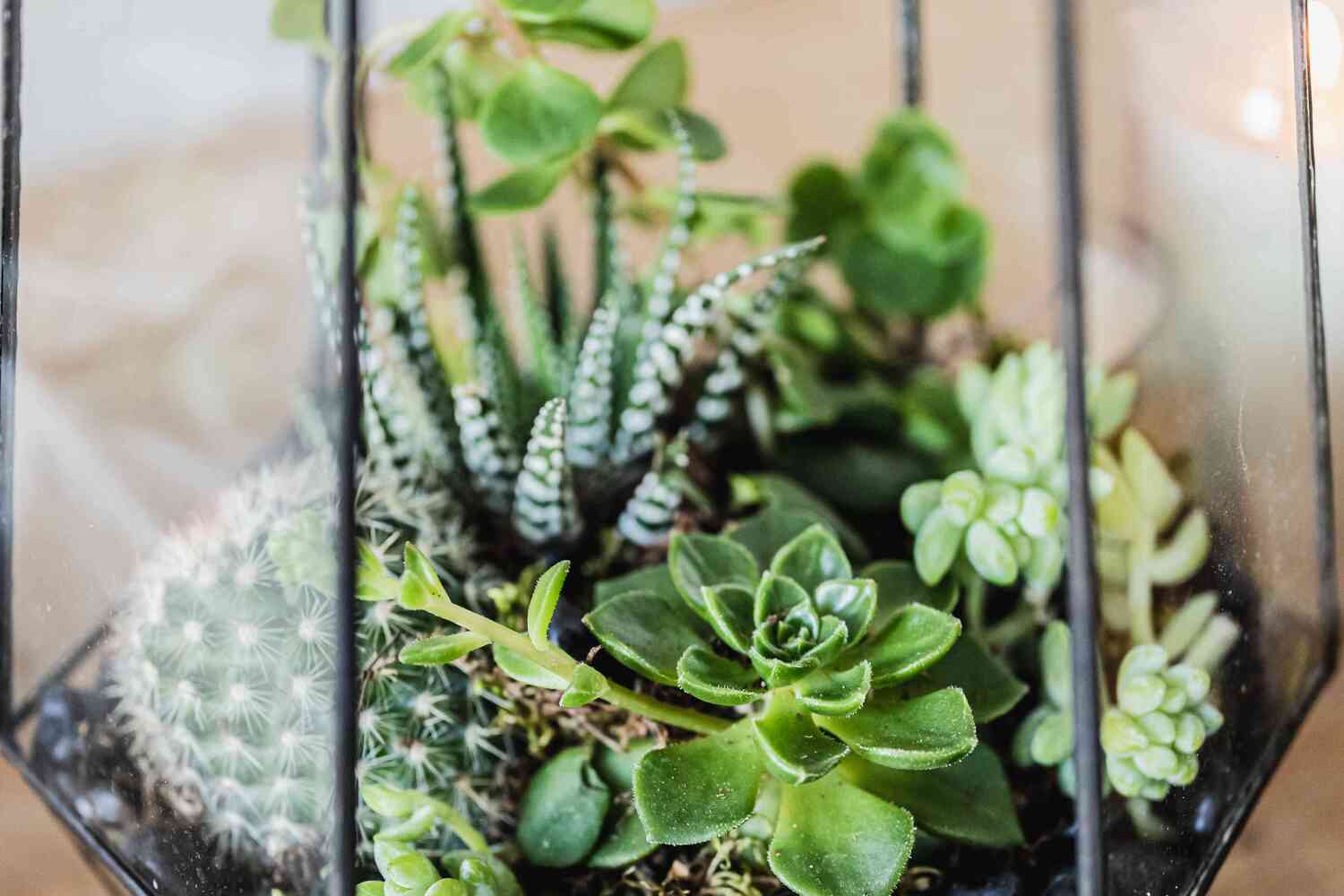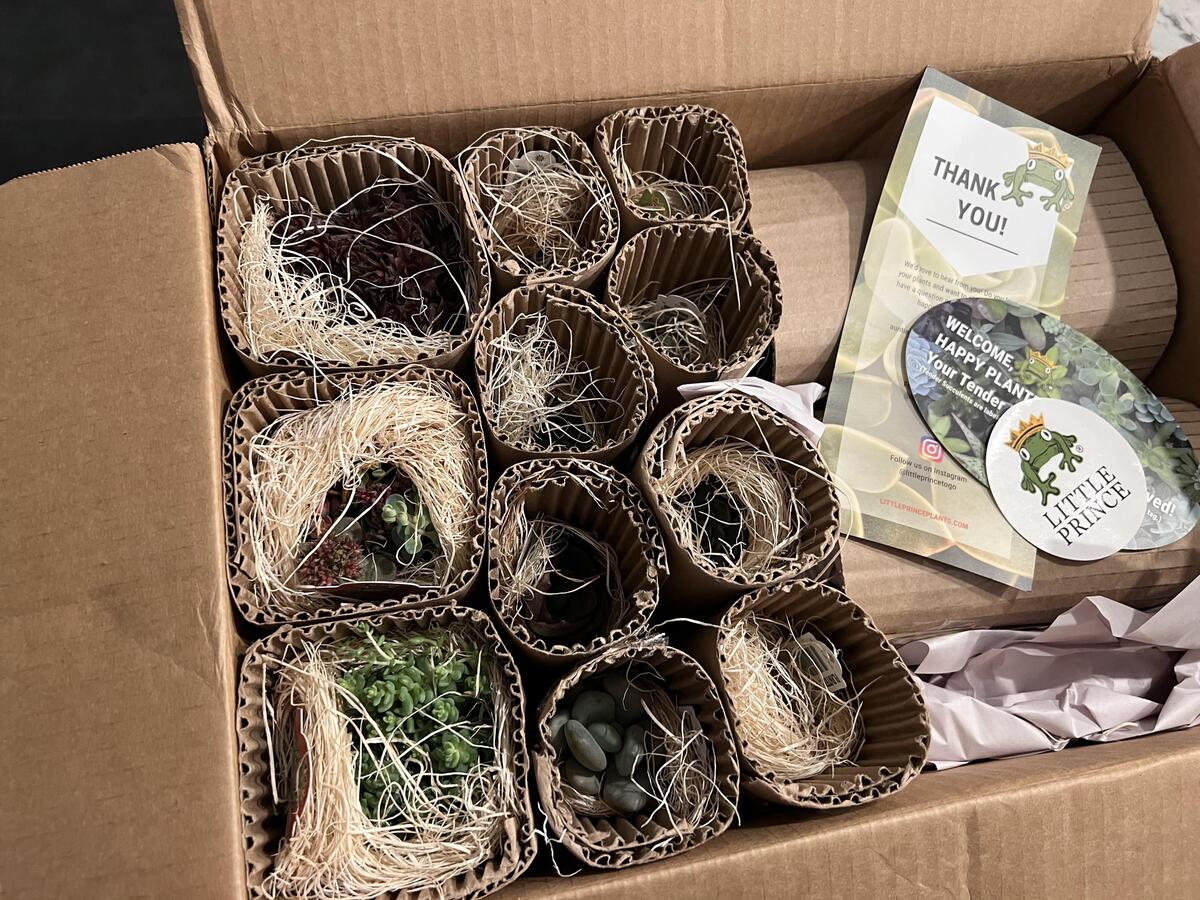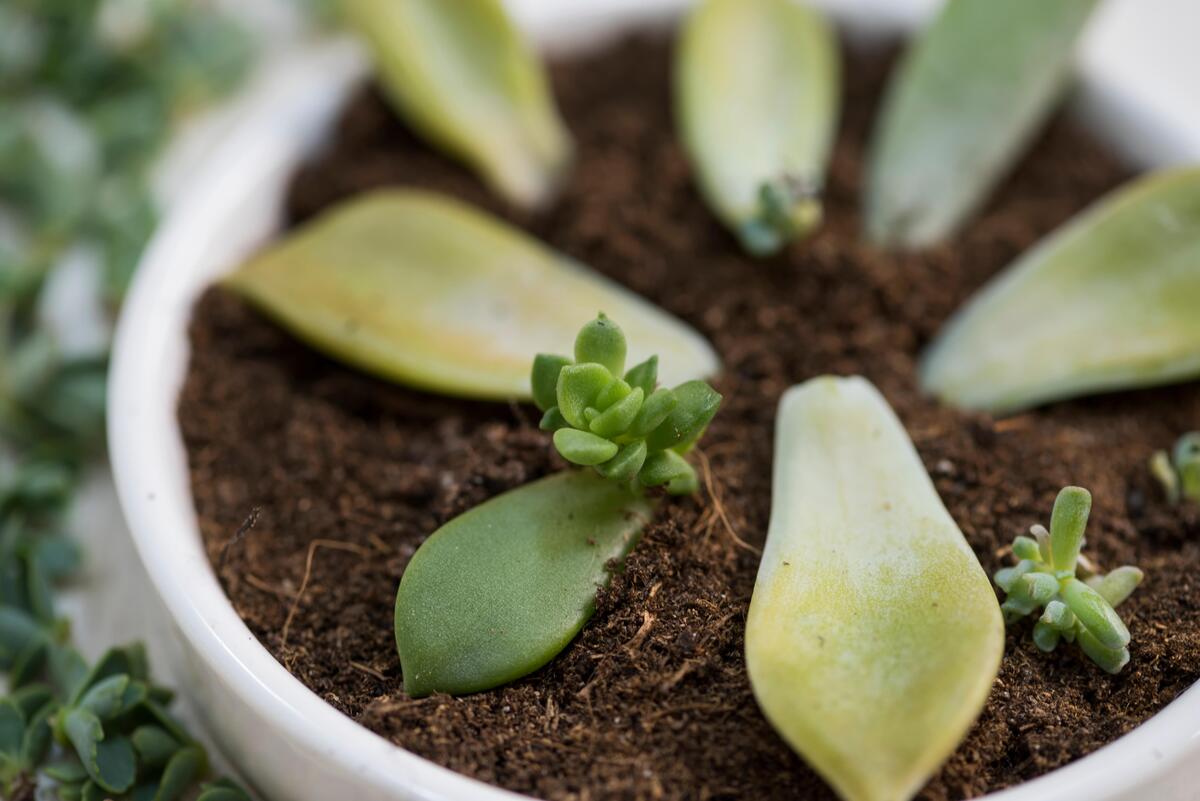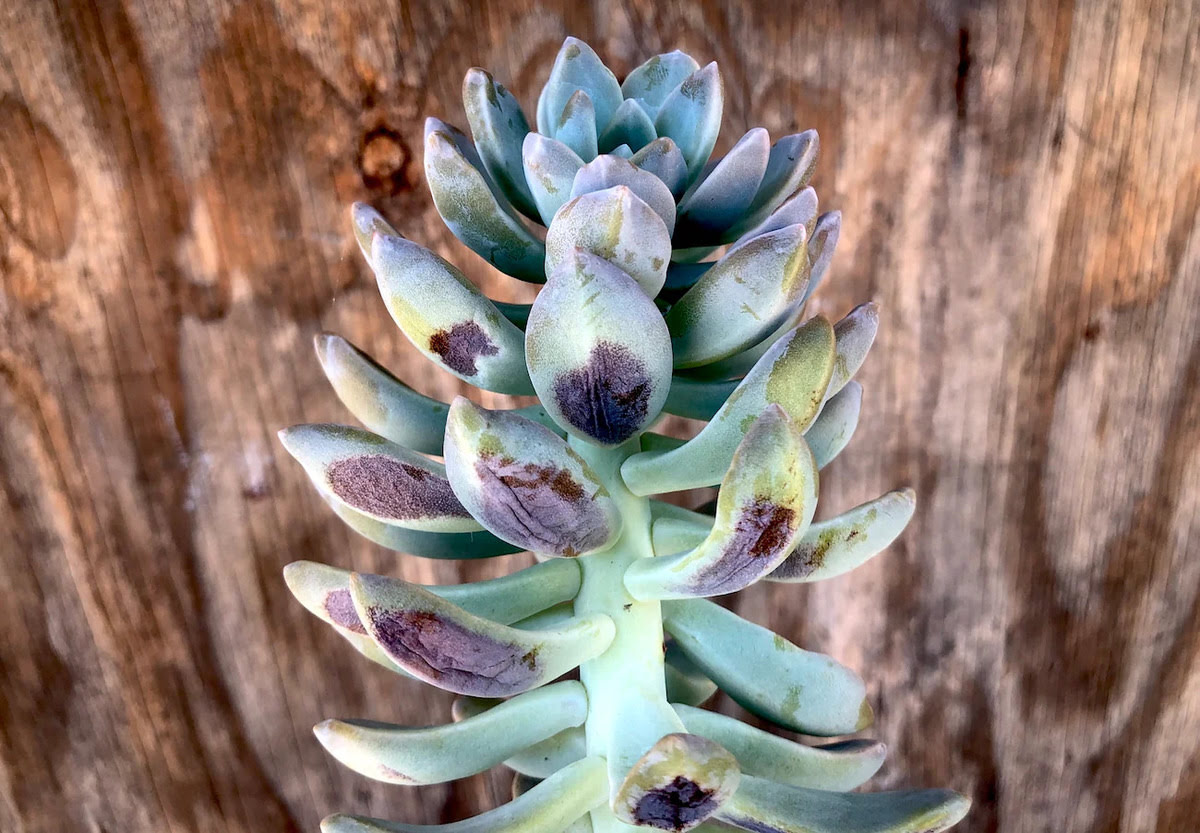Home>Gardening Techniques>Plant Care>How To Maintain Succulents
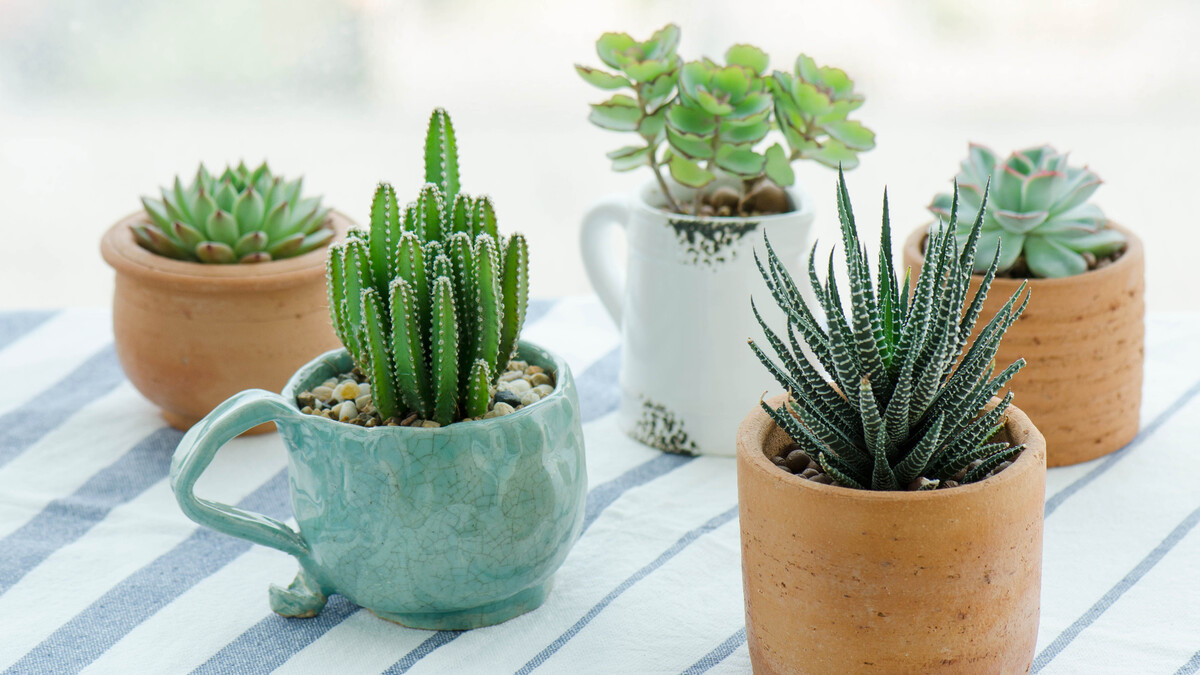

Plant Care
How To Maintain Succulents
Published: December 23, 2023
Learn the best plant care tips for maintaining healthy succulents. Discover essential techniques for watering, sunlight, and soil to help your succulents thrive.
(Many of the links in this article redirect to a specific reviewed product. Your purchase of these products through affiliate links helps to generate commission for Chicagolandgardening.com, at no extra cost. Learn more)
Table of Contents
Introduction
Succulents, with their captivating beauty and minimal maintenance requirements, have gained immense popularity among plant enthusiasts and novices alike. These unique plants are characterized by their fleshy leaves and stems, which enable them to store water, making them exceptionally resilient in dry conditions. Whether you're a seasoned gardener or a beginner with a budding green thumb, understanding the essential care techniques for succulents is crucial in ensuring their longevity and vibrancy.
In this comprehensive guide, we will delve into the fascinating world of succulents, exploring their unique characteristics and the fundamental principles of maintaining these resilient plants. From light and temperature requirements to watering techniques, soil and potting considerations, fertilizing, pest and disease management, as well as pruning and propagation, we will equip you with the knowledge and skills to cultivate thriving succulents in your own indoor or outdoor space.
Embracing the allure of succulents goes beyond mere gardening; it offers a therapeutic and rewarding experience, allowing you to connect with nature on a profound level. So, let's embark on this enlightening journey and unlock the secrets to nurturing these captivating plants with confidence and proficiency.
Understanding Succulents
Succulents are a diverse group of plants belonging to various botanical families, including but not limited to cacti, aloe, echeveria, and sedum. Their defining feature is their ability to store water in their leaves, stems, or roots, allowing them to thrive in arid and semi-arid environments. This unique adaptation enables succulents to withstand prolonged periods of drought, making them well-suited for individuals seeking low-maintenance plant companions.
One of the most intriguing aspects of succulents is their striking diversity in size, shape, and color. From the compact rosettes of echeveria to the spiky allure of cacti, succulents offer an array of visual delights, making them versatile additions to any indoor or outdoor setting. Furthermore, their resilience and adaptability make them excellent choices for both novice and experienced plant enthusiasts.
It’s essential to recognize that succulents originate from various regions worldwide, from the deserts of the Americas to the mountains of Africa. As a result, their individual care requirements may vary based on their natural habitat. Understanding the specific needs of your succulents, such as their preferred light intensity, temperature range, and watering habits, is pivotal in fostering their overall well-being and promoting robust growth.
By gaining insight into the fascinating characteristics and diverse nature of succulents, you can develop a deeper appreciation for these remarkable plants. As we continue our exploration, we will unravel the intricacies of caring for succulents, empowering you to cultivate thriving and vibrant specimens in your own personal botanical haven.
Light and Temperature Requirements
Understanding the light and temperature preferences of succulents is paramount in providing them with an environment conducive to robust growth and vitality. As a general rule, most succulents thrive in bright, indirect light, mimicking the conditions of their native habitats. Placing them near south- or east-facing windows can offer the ideal balance of sunlight exposure, although some species may tolerate direct sunlight for a portion of the day.
It’s important to observe your succulents closely to determine their individual light requirements. Signs of inadequate light include elongated or stretched growth, a phenomenon known as etiolation, which indicates that the plant is reaching for light. Conversely, sunburn or discoloration may occur if a succulent receives excessive direct sunlight, particularly during the intense midday hours. By striking the right balance, you can ensure that your succulents flourish and maintain their distinctive forms and vibrant hues.
When it comes to temperature, most succulents prefer a relatively warm and dry climate, akin to their native arid environments. While they can tolerate fluctuations in temperature, it’s crucial to shield them from prolonged exposure to extreme cold or frost, as this can be detrimental to their health. As a general guideline, maintaining a temperature range of 60-80°F (15-27°C) is conducive to the well-being of most succulent varieties.
During the winter months, it’s essential to shield succulents from cold drafts and provide adequate protection if they are situated near windows or doors. By prioritizing their light and temperature needs, you can create an environment that fosters the resilience and vibrancy of your succulents, allowing them to thrive and captivate with their natural allure.
Watering Techniques
Mastering the art of watering is a fundamental aspect of succulent care, as these plants have evolved to thrive in arid conditions with infrequent access to water. Overwatering is one of the most common pitfalls for succulent enthusiasts, often leading to root rot and other detrimental consequences. The key principle to bear in mind is that succulents prefer to dry out between watering sessions, as their specialized water-storage tissues enable them to endure periods of drought.
When determining the watering frequency for your succulents, factors such as the prevailing climate, season, and the specific species in your collection should be taken into account. In general, a thorough watering followed by a period of drying out is preferable to frequent, shallow watering. This encourages the development of robust root systems and helps prevent issues associated with waterlogged soil.
It’s advisable to use a well-draining soil mix specifically formulated for succulents and cacti to facilitate optimal water distribution and prevent water retention around the roots. When watering, apply the water directly to the soil at the base of the plant, avoiding wetting the leaves to minimize the risk of fungal diseases. After watering, ensure that excess water can freely drain from the pot to prevent waterlogged conditions.
Observing your succulents for visual cues can also guide your watering regimen. When the leaves appear slightly puckered or wrinkled, it may indicate that the plant is ready for watering. Conversely, if the leaves appear plump and turgid, the succulent likely retains sufficient moisture. By honing your observation skills and tailoring your watering practices to the specific needs of your succulents, you can foster their resilience and longevity, allowing them to thrive in your care.
Soil and Potting
The selection of an appropriate soil mix and potting strategy is pivotal in creating an environment conducive to the flourishing of succulents. Unlike many traditional houseplants, succulents require a well-draining soil mix that prevents water from accumulating around their roots. A high-quality potting mix designed specifically for succulents and cacti typically consists of a blend of porous materials such as coarse sand, perlite, and gritty soil, facilitating optimal drainage and aeration.
When repotting or planting succulents, it’s advisable to choose a container with drainage holes to prevent water from pooling at the bottom. This promotes healthy root development and reduces the risk of root rot, a common issue associated with waterlogged soil. Selecting a pot that allows for ample airflow around the roots can also contribute to the overall well-being of your succulents.
As succulents have shallow root systems, choosing a pot that provides ample room for root expansion while preventing excessive moisture retention is crucial. Additionally, the choice of pot material can impact the microclimate within the root zone. Terracotta pots, for instance, allow for the evaporation of excess moisture from the soil, while plastic or glazed ceramic pots may retain moisture for longer periods.
When potting succulents, it’s essential to position them at an appropriate depth to promote stability and discourage moisture-related issues. Ensuring that the soil level aligns with the base of the plant’s lowest leaves can help prevent rot and maintain the plant’s aesthetic appeal.
By selecting a well-draining soil mix, employing pots with adequate drainage, and adopting sound potting practices, you can create an optimal growing environment for your succulents. This thoughtful approach not only supports the health and vitality of your plants but also enhances the visual appeal of your succulent arrangements, allowing you to showcase these captivating specimens with pride.
Fertilizing
While succulents are renowned for their ability to thrive in nutrient-poor environments, providing them with occasional fertilization can bolster their growth and resilience. When it comes to fertilizing succulents, a cautious and conservative approach is advisable, as excessive fertilization can lead to adverse effects such as overly lush growth and diminished drought tolerance.
Opt for a balanced, water-soluble fertilizer formulated specifically for cacti and succulents, with a diluted concentration to mitigate the risk of overfeeding. During the active growing season in spring and summer, administer the fertilizer at half or quarter strength every 2-4 weeks, ensuring that the soil is moist before application. In contrast, refrain from fertilizing during the dormant winter months when succulents experience reduced growth and metabolic activity.
When applying the fertilizer, it’s crucial to direct it to the soil around the base of the plant, avoiding contact with the leaves to prevent potential damage or discoloration. After fertilization, water the succulents lightly to facilitate the distribution of nutrients throughout the root zone. Additionally, it’s advisable to err on the side of caution and under-fertilize rather than risk overstimulating the plants with an excess of nutrients.
Observing your succulents for signs of nutrient deficiency, such as pale or yellowing leaves, can guide your fertilization regimen. However, it’s important to note that a degree of natural color variation is inherent in many succulent species and may not necessarily indicate a nutrient imbalance. By approaching fertilization with prudence and attentiveness, you can support the robustness and vibrancy of your succulents without compromising their innate resilience.
Pests and Diseases
While succulents are renowned for their resilience, they are not immune to the threats posed by pests and diseases. Understanding the common afflictions that can affect succulents and implementing proactive measures is essential in safeguarding the health and vitality of these captivating plants.
One of the most prevalent pests that succulents may encounter is the mealybug, characterized by its white, cotton-like appearance. These small, sap-sucking insects can cause damage to the succulent’s foliage and stems, potentially leading to stunted growth and wilting. Additionally, aphids and spider mites are known adversaries of succulents, capable of inflicting harm if left unchecked. Regularly inspecting your succulents for signs of pest infestation, such as webbing, stippling, or the presence of tiny insects, enables early intervention and effective pest management.
To combat pest infestations, gentle removal of the pests with a cotton swab dipped in rubbing alcohol or the application of insecticidal soap can be effective measures. Additionally, isolating affected plants from the rest of your collection can prevent the spread of pests and facilitate targeted treatment. Implementing cultural practices such as maintaining adequate air circulation and removing debris can also mitigate the risk of pest infestations.
In addition to pests, succulents may be susceptible to fungal diseases such as powdery mildew and root rot, particularly in conditions of excessive moisture or inadequate airflow. To prevent these maladies, it’s crucial to avoid overwatering and ensure that the soil and potting mix are well-draining. If signs of fungal infection manifest, promptly adjusting the watering regimen, enhancing ventilation, and applying appropriate fungicidal treatments can help mitigate the spread of the disease.
By remaining vigilant and proactive in monitoring the health of your succulents, you can detect and address pest and disease issues in a timely manner, preserving the beauty and vigor of these remarkable plants.
Pruning and Propagation
Pruning and propagation are essential practices that enable succulent enthusiasts to shape and expand their collections while rejuvenating existing plants. Pruning, when performed with care and precision, can promote a tidy and compact growth habit, remove damaged or overgrown foliage, and stimulate new growth. Additionally, the trimmed cuttings can serve as valuable propagative material, allowing for the creation of new plants through a process known as propagation.
When pruning succulents, it’s advisable to use clean, sharp scissors or pruning shears to make precise cuts, minimizing the risk of damage to the plant. Removing dead or decaying leaves, particularly those situated close to the soil, can enhance the overall aesthetic appeal of the succulent and reduce the risk of pest infestation or disease. Trimming leggy or elongated stems can encourage the development of a more compact and balanced form, contributing to the visual allure of the plant.
The cuttings obtained through pruning can be utilized for propagation, offering an economical and gratifying means of expanding your succulent collection. Depending on the species, succulents can be propagated through various methods, including leaf cuttings, stem cuttings, division, and offsets. By carefully preparing the cuttings and providing them with suitable growing conditions, such as a well-draining propagation medium and indirect light, you can foster the emergence of new roots and initiate the growth of independent plants.
Propagation presents a rewarding opportunity to witness the remarkable resilience and regenerative capacity of succulents, as the cuttings gradually develop into self-sustaining individuals. Furthermore, it allows for the preservation and dissemination of unique and rare succulent varieties, contributing to the diversity and richness of succulent cultivation.
By incorporating pruning and propagation into your succulent care routine, you can actively shape the growth and composition of your collection while gaining firsthand experience in the propagation process, fostering a deeper connection with these captivating plants.
Conclusion
Embarking on the journey of succulent care unveils a world of captivating beauty, resilience, and endless fascination. From their diverse forms and striking visual appeal to their remarkable adaptability to arid environments, succulents have captured the hearts of plant enthusiasts worldwide. By gaining a deeper understanding of their unique characteristics and embracing the fundamental principles of succulent care, you can cultivate thriving and vibrant specimens that enrich your living spaces and nourish your connection with nature.
Throughout this comprehensive guide, we have explored the essential facets of succulent care, from light and temperature requirements to watering techniques, soil and potting considerations, fertilizing, pest and disease management, as well as pruning and propagation. By integrating these insights into your succulent care regimen, you can create an optimal environment that supports the health, vitality, and aesthetic appeal of your cherished plants.
Furthermore, the journey of succulent care extends beyond the realm of gardening; it offers a source of solace, creativity, and fulfillment. The act of nurturing succulents provides an opportunity to cultivate mindfulness, patience, and a profound appreciation for the intricate beauty of the natural world. Whether you are tending to a single succulent on your windowsill or curating an extensive collection, each interaction with these resilient plants fosters a sense of wonder and connection with the rhythms of life.
As you continue to immerse yourself in the enchanting realm of succulents, may this guide serve as a beacon of knowledge and inspiration, empowering you to cultivate thriving and resplendent succulents that bring joy and tranquility into your everyday life. Embrace the art of succulent care with enthusiasm and curiosity, and allow the timeless allure of these remarkable plants to enrich your living spaces and elevate your appreciation for the natural world.

